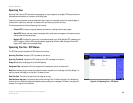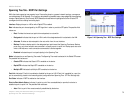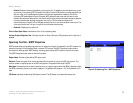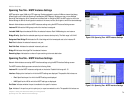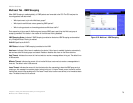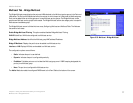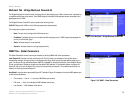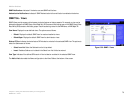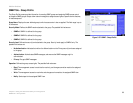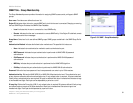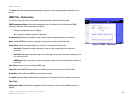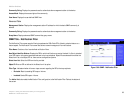
76
Chapter 5: Using the Web-based Utility for Configuration
Multicast Tab - IGMP Snooping
WebView Switches
Multicast Tab - IGMP Snooping
When IGMP Snooping is enabled globally, all IGMP packets are forwarded to the CPU. The CPU analyzes the
incoming packets and determines:
• Which ports want to join which Multicast groups?
• Which ports have Multicast routers generating IGMP queries?
• Which routing protocols are forwarding packets and Multicast traffic?
Ports requesting to join a specific Multicast group issue an IGMP report, specifying that Multicast group is
accepting members. This results in the creation of the Multicast filtering database.
IGMP Snooping Status. Indicates if IGMP Snooping is enabled on the device. IGMP Snooping can be enabled
only if Bridge Multicast Filtering is enabled.
VLAN ID. Specifies the VLAN ID.
IGMP Status. Indicates if IGMP snooping is enabled on the VLAN.
Auto Learn. Indicates if Auto Learn is enabled on the device. If Auto Learn is enabled, the device automatically
learns where other Multicast groups are located. Enables or disables Auto Learn on the Ethernet device.
Host Timeout. Indicates the amount of time host waits to receive a message before timing out. The default time
is 260 seconds.
MRouter Timeout. Indicates the amount of the time the Multicast router waits to receive a message before it
times out. The default value is 300 seconds.
Leave Timeout. Indicates the amount of time the host waits, after requesting to leave the IGMP group and not
receiving a Join message from another station, before timing out. If a Leave Timeout occurs, the switch notifies
the Multicast device to stop sending traffic The Leave Timeout value is either user-defined, or an immediate leave
value. The default timeout is 10 seconds.
Figure 5-52: Multicast - IGMP Snooping



